
views
The 15 Most Sacred Geometry Symbols
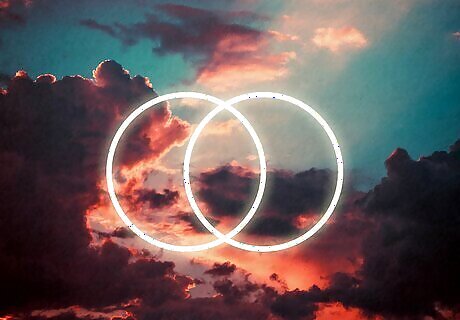
Vesica Piscis The Vesica Piscis is made up of two intersecting, identical circles. The center of each circle meets the perimeter of the other. This sacred symbol spiritually represents creation, creativity, fertility, simplicity, and truth. Vesica Piscis has been used as the modern-day Venn diagram, as well as in the “Ichthys” or “Jesus Fish” symbol. Other significant symbols are derived from the Vesica Piscis, such as the Triquetra in Celtic art and the Mandorla in religious art and architecture. Freemasons have also historically used the Vesica Piscis as an important symbol worn by the officiants of masonic rituals.
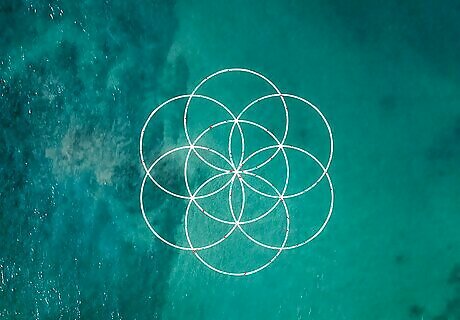
Seed of Life The Seed of Life is made up of seven intertwined circles, creating a simple, symmetrical pattern that’s reminiscent of a flower. The Seed of Life is said to create the recipe of life and all its potential. This geometric symbol is thought to give symbolic protective qualities to any jewelry or other decorations it appears on. Some believe that it clears negative energy and blesses the wearer with positive energy. In religious texts, the seven circles in the Seed of Life represent the seven days in which the world was said to be created. Consequently, the powerful symbol appears in prayer books and the architecture of religious cathedrals, temples, and mosques.
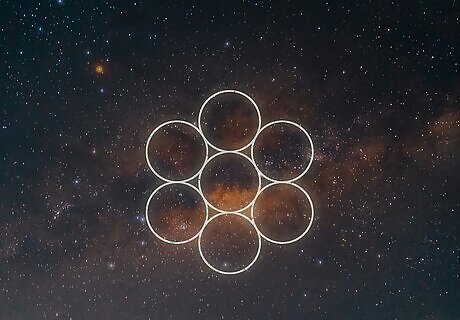
Egg of Life The Egg of Life’s design features six circles encircling one central circle. The shape of the Egg of Life is often compared to how plant and animal cells appear when undergoing mitosis or cell division. Due to this similarity, the Egg of Life is thought to represent a crucial stage in the cycle of life. The Egg of Life also serves as a link between the simple Seed and the complex Flower, providing a reminder of how every living thing can transform and grow. This symbol can also be visualized within Metatron’s Cube, another sacred geometry symbol.

Flower of Life The Flower of Life features 19 interlocking circles, all within one larger circle. The Flower of Life is one of the most widely recognized and powerful sacred geometry symbols. This shape was used as a powerful symbol throughout ancient cultures, from the Egyptian pyramids to Japanese temples. Evolving from the Egg of Life, the Flower is thought to represent the next stage in the cycle of life and the interconnectedness of all living things. However, the full meaning of the Flower of Life isn’t concretely known, as followers of sacred geometry believe that it’s the key to all of life’s mysteries—including the creation of the universe. It’s believed that learning what the Flower of Life truly means was such powerful knowledge that ancient peoples had to keep it secret.
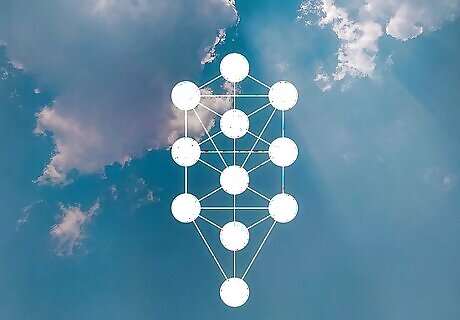
Tree of Life The Tree of Life is represented in a geometric pattern with ten interconnected circles, with 22 linear paths connecting each one. Its shape is created by connecting the circles in the Flower of Life, which represents the growth and flourishing of living things. Similarly, the Tree of Life in sacred geometry represents the interconnectivity of everything in the universe, including things that we cannot see or conceptualize. Some people understand the Tree of Life symbol as a hierarchical structure for all universal forces or as a map to one’s soul. This symbol has been used across many cultures and belief systems, especially in Jewish, Christian, and Hindu faiths. The Tree of Life can be found in religious symbols such as the Kabbalistic Tree of Life and the Biblical Tree of Life in the Garden of Eden.
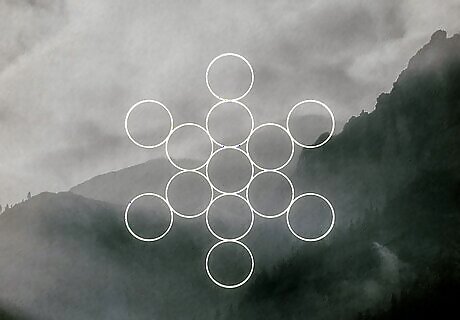
Fruit of Life The Fruit of Life is made up of 13 interconnected spheres, and it emerges as the Flower of Life is extended out and all its circles are completed. This symbol is considered a feminine shape due to its curved lines. Due to its placement within the Flower of Life, the Fruit of Life is considered to be one of the most powerful symbols in sacred geometry. The thirteen spheres in the Fruit of Life represent unity and transition between thirteen realms—similar to how a chromatic scale of 12 musical notes elevates from one note to the next. When the centers of the 13 spheres are connected, the lines create Metatron’s Cube, another important sacred geometry symbol.
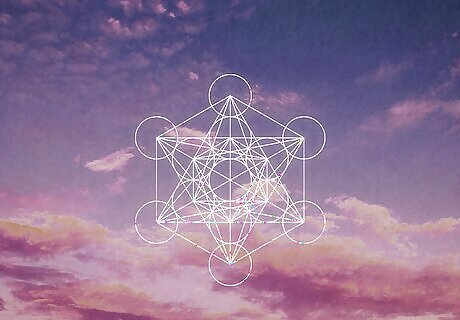
Metatron’s Cube Metatron’s Cube is a highly complex symbol made up of 13 circles, all of which are encompassed by a larger circle and lines linking the center of each circle. The five Platonic Solids—the Cube, Tetrahedron, Octahedron, Icosahedron, and Dodecahedron—can all be found within Metatron’s Cube. Metatron’s Cube borrows its name from an important archangel in Islamic, Judaic, and Christian texts. Some believe that Metatron’s Cube holds the keys to the creation of the universe, just as the Archangel Metatron was thought to. By honoring and understanding Metatron’s Cube as a sacred symbol, believers hope to connect with the archangel’s deep wisdom and knowledge.

Grid of Life The Grid of Life is composed of 64 individual tetrahedrons and serves as the masculine counterpart to the Flower of Life. Some people believe that, if researched properly, the Grid of Life can reveal unknown information about the space-time continuum. The Grid of Life is also significant because of its connection to the number 64 which, according to sacred geometry, symbolizes the interconnectedness of all things. This symbolism is largely due to the number 64’s reappearance throughout the natural world, technological advancements, and religious texts. 64 is the number of codons in human DNA, tantras in Hinduism, and generations between Adam and Jesus, to name a few of its notable appearances. 64 is also a foundational number in technological memory storage, i.e. 64 gigabytes.
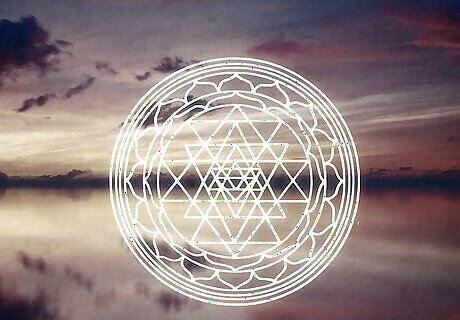
Sri Yantra Sri Yantra is composed of nine interlocking triangles that all emerge from a central point, creating 43 triangles total. Followers of sacred geometry believe that this symbolic web represents the entire cosmos, with the interplay between triangles symbolizing the connection and balance between feminine and masculine energies. This ancient and sacred symbol is an important part of Hindu spirituality, representing harmony and balance. It’s often used in meditation as a vehicle to contemplate the divine powers of the universe.
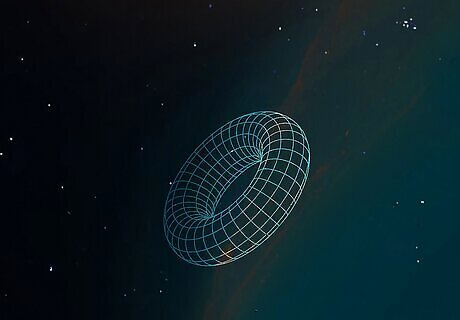
Torus The Torus symbol resembles a vortex-like structure that’s thought to appear in every part and piece of the universe. Symbolically, the Torus represents a continuous flow and is associated with auras, chakras, energy flow, infinity, and the cycle of life. A Torus symbol also signifies how something small and seemingly insignificant can contribute to a larger cause or motion. Torus shapes can appear in nature as galaxy clusters (also known as cosmic donuts), lenticular clouds, tornadoes, and whirlpools.
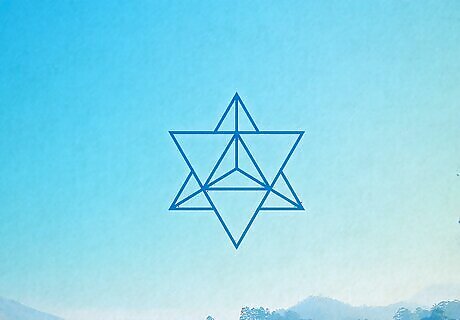
Merkaba The Merkaba symbol fuses together two tetrahedrons that are interlocked and rotated in opposite directions. The intersection between these two shapes is believed to create an energy field that’s full of power and spiritual light. Some people believe that every individual has their own Merkaba that can be awakened through advanced meditation. This individual Merkaba is thought to give each person a protective aura and access to higher planes of consciousness and potential. The Merkaba is also sometimes visualized as a 3-dimensional Star of David, so it may also symbolize the relationship between humankind and divine beings.
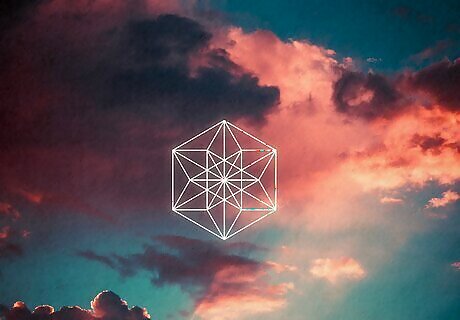
Vector Equilibrium The Vector Equilibrium is the only geometric symbol where all vectors are of an equal length. It features 12 vertices, 8 triangular faces, 24 edges, and 32 planes. As the only geometric form where all forces are equal and balanced, the Vector Equilibrium represents the equality between opposite forces like push and pull.

The Platonic Solids Platonic Solids have faces that are all the same size, edges that are all the same length, and angles that are all the same degree. There are five Platonic Solids in total, each of which is associated with a different element. Cube: Six square faces, represents the Earth element. Tetrahedron: Four triangular faces, represents the Fire element. Octahedron: Eight triangular faces, represents the Air element. Dodecahedron: Twelve pentagonal faces, represents the Aether element. Icosahedron: Twenty triangular faces, represents the Water element.
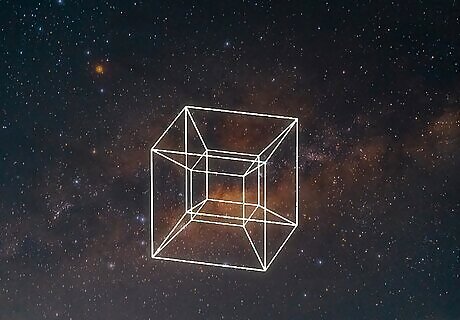
4-D Geometric Shapes There are five 4-D geometric shapes that are essentially the 4-dimensional versions of the Platonic Solids. These shapes, also known as regular convex polytopes, are called the tesseract (4-D cube), pentachoron (tetrahedron), the 16-cell (octahedron), the 120-cell (dodecahedron), and the 600-cell (icosahedron). Since modern technology has a limited capacity to present these shapes visually, the concept of them must be visualized in the mind’s eye or studied mathematically. Geometrically and spiritually, these shapes give insight into the harmony and beauty of dimensions that can’t be seen with the human eye.
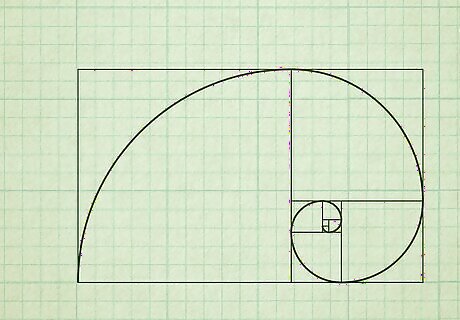
Golden spiral The golden spiral is a visual way to represent the Fibonacci sequence. To calculate the Fibonacci sequence, one calculates each new number by adding together the preceding two integers. This formula results in a proportion, also known as the golden ratio, that is seen throughout nature and used to design architecture and digital interfaces. In nature, the golden spiral or ratio can be found in flower petals, pinecones, tree branches, and, famously, seashells.
What is sacred geometry?
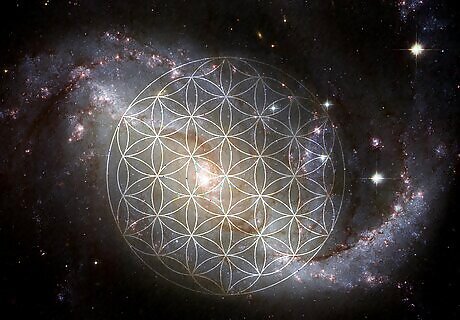
Sacred geometry explains the universe’s energy patterns through geometric symbols. Followers of sacred geometry believe that these symbols hold immense power and are the foundation of every living thing. All of these symbols are perfect geometric shapes that can be found in nature, but they can also be found in important monuments and artwork throughout history. Different cultures, time periods, and geographical locations have all used these sacred geometry symbols in one form or another. The fact that so many cultures with no known method of communication all honored these symbols is especially significant to followers of sacred geometry. They believe that, in order to be so widely used throughout history, these symbols must originate from the deepest points of human consciousness and life.
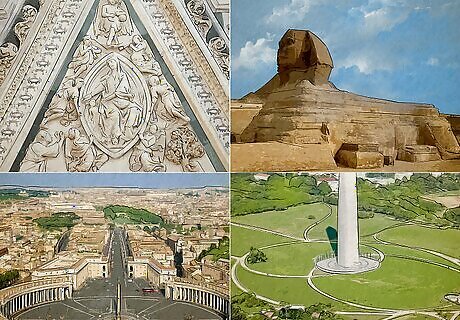
Sacred geometry can be found in art, nature, and religious practices. These symbols are often found in the foundational architecture of cathedrals, churches, synagogues, and mosques. They were thought to give a deeper spiritual meaning and connection to these sacred buildings. For example, sacred geometric symbols are found in Mexico’s Pyramid of the Sun and Egypt’s Great Pyramid of Giza. Great artists also incorporate sacred geometry symbols, as Leonardo da Vinci did with his Vitruvian Man, and as many artists do when incorporating the golden ratio in their work. In the patterns of nature, sunflowers resemble a 3-D Flower of Life symbol, while Nautilus shells represent the Fibonacci sequence. Sacred geometry also tends to pop up in religious symbols, such as the crossover between the Vesica Piscis and the fish symbol used by early Christians to identify their faith.
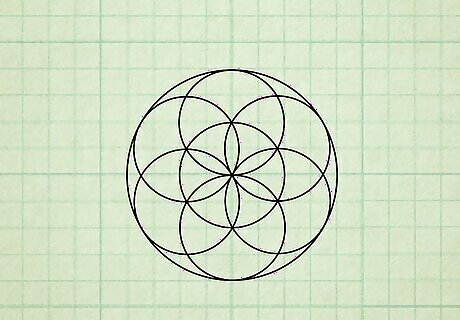
Sacred geometry’s creation story starts with a single point. This point was thought to be the first thing that existed in the history of the universe. A circle grew with this point at its center, representing the point's consciousness. Eventually, the point moved to the edge of its circular consciousness, creating another circle to form the Vesica Piscis symbol. This point continued to expand its awareness by moving to the intersection of each circle of consciousness. The geometric shapes continued to multiply as the point moved through each of the seven days in the creation story, ultimately creating the Seed of Life. As the point continued to rotate around the circle, it created other sacred geometry symbols like the Egg of Life and the Flower of Life.




















Comments
0 comment